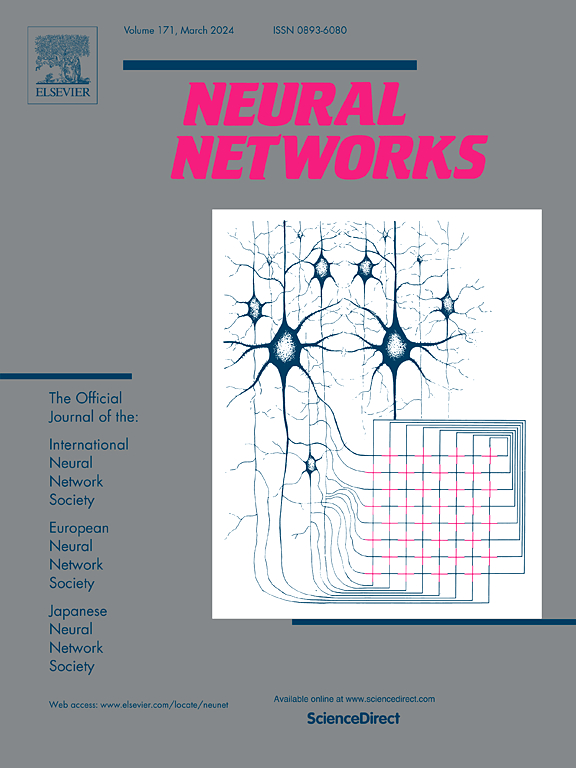BSA-Seg: A Bi-level sparse attention network combining narrow band loss for multi-target medical image segmentation
IF 6
1区 计算机科学
Q1 COMPUTER SCIENCE, ARTIFICIAL INTELLIGENCE
引用次数: 0
Abstract
Segmentation of multiple targets of varying sizes within medical images is of significant importance for the diagnosis of disease and pathological research. Transformer-based methods are emerging in the medical image segmentation, leveraging the powerful yet computationally intensive self-attention mechanism. A variety of attention mechanisms have been proposed to reduce computation at the cost of accuracy loss, utilizing handcrafted patterns within local or artificially defined receptive fields. Furthermore, the common region-based loss functions are insufficient for guiding the transformer to focus on tissue regions, resulting in their unsuitability for the segmentation of tissues with intricate boundaries. This paper presents the development of a bi-level sparse attention network and a narrow band (NB) loss function for the accurate and efficient multi-target segmentation of medical images. In particular, we introduce a bi-level sparse attention module (BSAM) and formulate a segmentation network based on this module. The BSAM consists of coarse-grained patch-level attention and fine-grained pixel-level attention, which captures fine-grained contextual features in adaptive receptive fields learned by patch-level attention. This results in enhanced segmentation accuracy while simultaneously reducing computational complexity. The proposed narrow-band (NB) loss function constructs a target region in close proximity to the tissue boundary. The network is thus guided to perform boundary-aware segmentation, thereby simultaneously alleviating the issues of over-segmentation and under-segmentation. A series of comprehensive experiments on whole brains, brain tumors and abdominal organs, demonstrate that our method outperforms other state-of-the-art segmentation methods. Furthermore, the BSAM and NB loss can be applied flexibly to a variety of network frameworks.
BSA-Seg:一种结合窄带损失的双级稀疏注意网络,用于多目标医学图像分割
医学图像中不同大小的多个目标的分割对于疾病的诊断和病理研究具有重要意义。基于变换的方法正在医学图像分割中出现,利用强大但计算密集型的自关注机制。人们提出了多种注意机制,利用局部或人工定义的接受域内手工制作的模式来减少计算,以准确性损失为代价。此外,常见的基于区域的损失函数不足以引导变压器聚焦于组织区域,导致其不适合具有复杂边界的组织分割。本文提出了一种双级稀疏注意网络和窄带损失函数的发展,用于医学图像的准确、高效的多目标分割。特别地,我们引入了一个双层稀疏注意模块(BSAM),并在此基础上构建了一个分割网络。BSAM包括粗粒度的补丁级注意和细粒度的像素级注意,捕获了通过补丁级注意学习的自适应接受域中的细粒度上下文特征。这提高了分割精度,同时降低了计算复杂度。提出的窄带(NB)损失函数在靠近组织边界的位置构建一个目标区域。从而引导网络进行边界感知分割,从而同时缓解过分割和欠分割的问题。一系列对全脑、脑肿瘤和腹部器官的综合实验表明,我们的方法优于其他最先进的分割方法。此外,BSAM和NB损耗可以灵活地应用于各种网络框架。
本文章由计算机程序翻译,如有差异,请以英文原文为准。
求助全文
约1分钟内获得全文
求助全文
来源期刊

Neural Networks
工程技术-计算机:人工智能
CiteScore
13.90
自引率
7.70%
发文量
425
审稿时长
67 days
期刊介绍:
Neural Networks is a platform that aims to foster an international community of scholars and practitioners interested in neural networks, deep learning, and other approaches to artificial intelligence and machine learning. Our journal invites submissions covering various aspects of neural networks research, from computational neuroscience and cognitive modeling to mathematical analyses and engineering applications. By providing a forum for interdisciplinary discussions between biology and technology, we aim to encourage the development of biologically-inspired artificial intelligence.
 求助内容:
求助内容: 应助结果提醒方式:
应助结果提醒方式:


